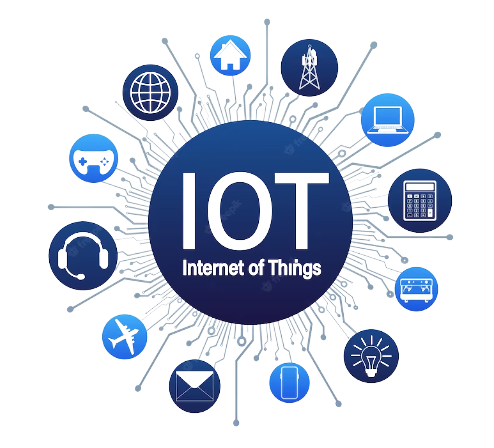Building a successful IoT strategy requires careful planning and consideration of various factors, including device selection, network infrastructure, security and privacy, integration with existing systems, data analytics, and regulatory compliance.
The Internet of Things (IoT) is changing the way we interact with technology and devices around us. With the increasing number of connected devices, organizations are realizing the importance of building a successful IoT strategy. In this blog post, we will discuss the best practices and challenges of building an IoT strategy.
Understanding IoT Strategy
Defining IoT Strategy:
It refers to the plan of action that outlines how an organization will leverage IoT to achieve its business objectives. It includes identifying use cases, selecting the right IoT platform, developing a data strategy, and ensuring security and privacy.
Importance of IoT Strategy:
IoT is transforming how businesses operate, and building a successful strategy can help organizations leverage the power of connected devices to improve efficiency, reduce costs, and drive innovation.

Components of an IoT Strategy:
An IoT strategy typically includes the following components:
- Use cases and business objectives
- IoT platform selection
- Data management and analysis
- Security and privacy considerations
- Scalable and flexible architecture
- Talent and skills development
Best Practices for Building an IoT Strategy
-
Identify Business Objectives and Use Cases:
The first step is to identify business objectives and use cases. This involves understanding how IoT can be used to solve business problems and improve operations.
-
Choose the Right IoT Platform:
Selecting the right IoT platform is critical to the success of an IoT strategy. Organizations must consider factors such as scalability, flexibility, interoperability, security, and ease of use when choosing an IoT platform.
-
Collaborate with Stakeholders:
Building an IoT strategy requires collaboration between different stakeholders, including IT, operations, and business units. It is important to involve all relevant stakeholders in the planning and implementation process.
-
Ensure Security and Privacy:
Security and privacy are critical considerations in an IoT strategy. Organizations must ensure that devices and data are secure and that privacy is protected throughout the entire lifecycle of the IoT solution.
-
Implement Scalable and Flexible Architecture:
IoT solutions must be scalable and flexible to accommodate the growing number of connected devices and changing business needs. Organizations must design an architecture that can adapt to future requirements.
-
Develop a Data Strategy:
IoT generates a massive amount of data, and organizations must have a data strategy in place to manage and analyze this data effectively. This includes defining data storage and processing requirements and selecting the right analytics tools.
Challenges in Building an IoT Strategy
-
Data Management and Analysis:
IoT generates a massive amount of data and managing and analyzing this data can be challenging. Organizations must have the right tools and infrastructure in place to manage and analyze IoT data effectively.
-
Security and Privacy Risks:
IoT devices and data are vulnerable to security threats, and organizations must take steps to ensure that devices and data are secure throughout the entire IoT ecosystem. This includes securing devices, networks, and data from potential attacks, as well as protecting user privacy.
One way to mitigate security and privacy risks is to implement robust authentication and encryption protocols. IoT devices should be designed with secure hardware and firmware, and organizations should ensure that devices are updated regularly with the latest security patches.
Additionally, organizations should establish clear policies and procedures for handling sensitive data and ensure that all stakeholders, including employees and third-party vendors, are trained on proper security protocols.
-
Integration with Existing Systems
Another challenge in building a successful strategy is integrating IoT devices and data with existing systems and infrastructure. This can be especially challenging for legacy systems that were not designed to work with IoT devices.
Organizations should develop a clear plan for integrating IoT devices and data with existing systems to overcome this challenge. This may involve leveraging APIs or developing custom integration solutions. It is important to consider factors such as data compatibility, data flow, and scalability when developing an integration plan.
-
Data Analytics
One of the key benefits of IoT is the ability to collect and analyze vast amounts of data in real time. However, this can also be a challenge, as organizations must have the tools and expertise to analyze and derive insights from this data.
To overcome this challenge, organizations should invest in advanced data analytics tools and platforms that can process and analyze IoT data in real-time. They should also hire or train data scientists and analysts with expertise in IoT data analysis.
-
Regulatory Compliance
Finally, organizations must ensure that their IoT strategy is compliant with relevant regulations and standards, such as data privacy laws and industry-specific regulations. Failure to comply with these regulations can result in significant legal and financial consequences.
To ensure regulatory compliance, organizations should work with legal and compliance experts to understand the requirements and develop policies and procedures that meet or exceed these requirements. They should also stay up-to-date with changes in regulations and adjust their strategy as needed.
Conclusion
Building a successful IoT strategy requires careful planning and consideration of various factors, including device selection, network infrastructure, security and privacy, integration with existing systems, data analytics, and regulatory compliance. By following best practices and addressing potential challenges, organizations can harness the power of IoT to drive innovation, increase efficiency, and improve customer experiences.
Unlock the potential of IoT with Tanbits. Our IoT services empower organizations to build successful IoT strategies that drive innovation and efficiency. From device connectivity to data analytics, we help businesses leverage the power of IoT for transformative growth.











